Scientists from the International Center for Radio Astronomy Research (ICRAR) and The University of Western Australia (UWA) have set a world record for the most stable transmission of a laser signal through the atmosphere.
In a study published today in the journal Nature Communications, Australian researchers teamed up with researchers from the French National Center for Space Studies (CNES) and the French metrology lab Systèmes de Référence Temps-Espace (SYRTE) at Paris Observatory.
The team set the world record for the most stable laser transmission by combining the Aussies’ ‘phase stabilization’ technology with advanced self-guiding optical terminals.
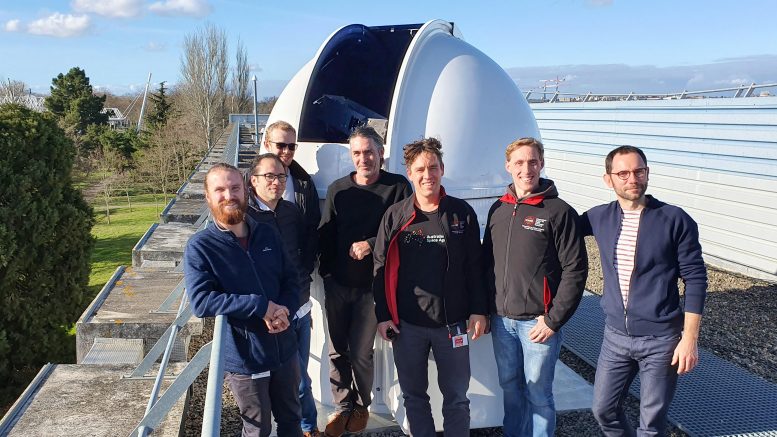
Members of the project team standing in front of a telescope dome located at the CNES campus in Toulouse, containing one of the self-guiding optical terminals. Credit: ICRAR/UWA
Together, these technologies allowed laser signals to be sent from one point to another without interference from the atmosphere.
Lead author Benjamin Dix-Matthews, a PhD student at ICRAR and UWA, said the technique effectively eliminates atmospheric turbulence.
“We can correct for atmospheric turbulence in 3D, that is, left-right, up-down and, critically, along the line of flight,” he said.
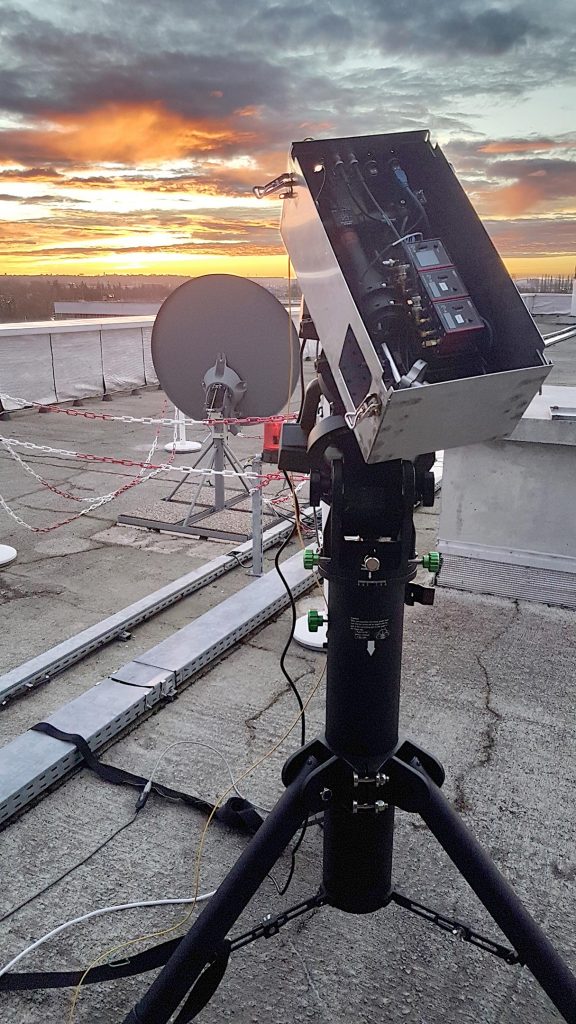
One of the self-guiding optical terminals on its telescope mount on the roof of a building at the CNES campus in Toulouse. Credit: ICRAR/UWA
“It’s as if the moving atmosphere has been removed and doesn’t exist. It allows us to send highly-stable laser signals through the atmosphere while retaining the quality of the original signal.”
The result is the world’s most precise method for comparing the flow of time between two separate locations using a laser system transmitted through the atmosphere.
ICRAR-UWA senior researcher Dr. Sascha Schediwy said the research has exciting applications.
“If you have one of these optical terminals on the ground and another on a satellite in space, then you can start to explore fundamental physics,” he said.
“Everything from testing Einstein’s theory of general relativity more precisely than ever before, to discovering if fundamental physical constants change over time.”
The technology’s precise measurements also have practical uses in earth science and geophysics.
“For instance, this technology could improve satellite-based studies of how the water table changes over time, or to look for ore deposits underground,” Dr. Schediwy said.
There are further potential benefits for optical communications, an emerging field that uses light to carry information.
Optical communications can securely transmit data between satellites and Earth with much higher data rates than current radio communications.
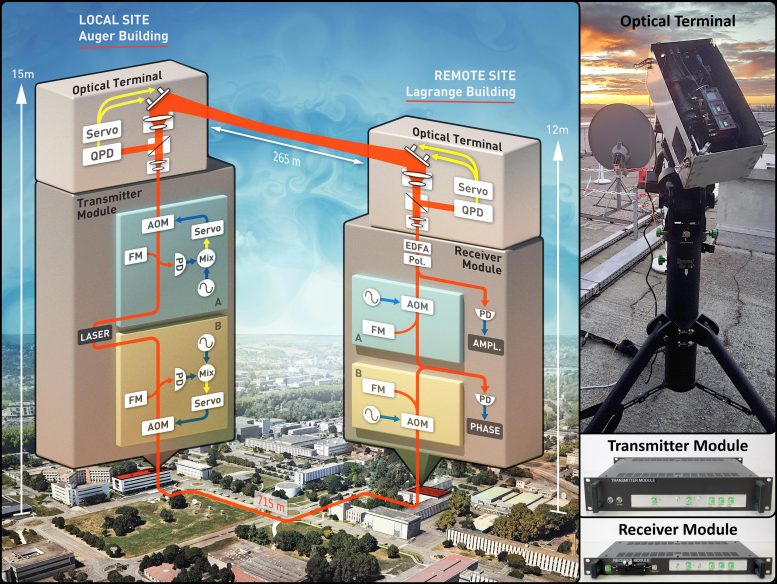
A schematic view of our point-to-point atmospheric-stabilized optical link between two buildings at the CNES campus in Toulouse. Right; one of the self-guiding optical terminals on its telescope mount, and the phase-stabilization Transmitter Module and Receiver Module. Credit: ICRAR/UWA
“Our technology could help us increase the data rate from satellites to ground by orders of magnitude,” Dr. Schediwy said.
“The next generation of big data-gathering satellites would be able to get critical information to the ground faster.”
The phase stabilization technology behind the record-breaking link was originally developed to synchronize incoming signals for the Square Kilometer Array telescopes.
The multi-billion-dollar telescopes are set to be built in Western Australia and South Africa.
Reference: “Point-to-point stabilized optical frequency transfer with active optics” by Benjamin P. Dix-Matthews, Sascha W. Schediwy, David R. Gozzard, Etienne Savalle, François-Xavier Esnault, Thomas Lévèque, Charles Gravestock, Darlene D’Mello, Skevos Karpathakis, Michael Tobar and Peter Wolf, 22 January 2021, Nature Communications.
DOI: 10.1038/s41467-020-20591-5

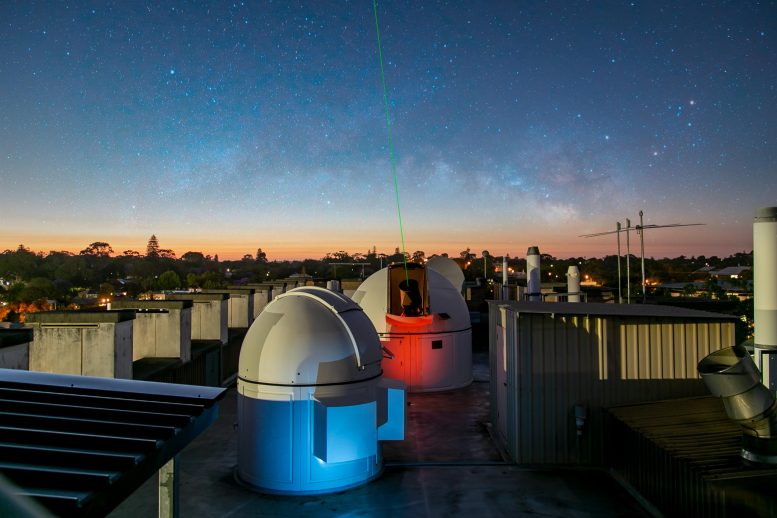







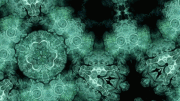
Be the first to comment on "Testing Whether Einstein’s Theory of General Relativity Is Right With a Record-Breaking Laser Link"